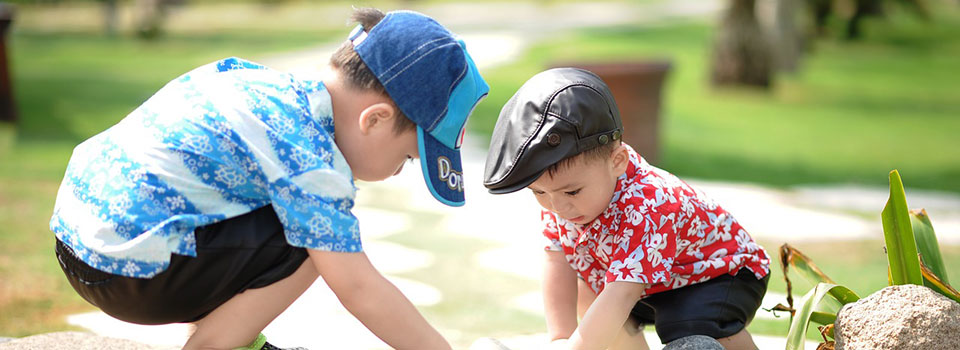English is the language my entire family speaks. Only English. I know a smidgeon of French from high school, but that is it. My husband speaks both his primary language as well as English, which he learned from an early age. He came to the United States for college and in our home, he exclusively speaks English.
When our child was born, articles like this one from Duke TiP taught me that having two languages spoken at home benefits brain development. Unfortunately, all attempts to teach our son my husband’s native language are rebuffed, loudly.
Svenska language immersion or bilingual education for children, what worked for us?
Moving to Sweden, I feared this hostility to new, non-English words would hold him back. Making friends and fitting in with the other children on the playground is important at his age. While excited about the new cultural experiences, a very real fear of a rocky transition took hold.
Online forums universally recommend ensuring children are around Svenska speakers as early as possible. I chose a bilingual preschool to advance his Svenska education and hoped hearing English as well would reduce his hostility towards the new language. I find Svenska immersion intimidating. What I soon discovered was that even though both languages were spoken in the school, the majority of the students were English speakers.
My very social son, used his selective reasoning to learn a few nouns and a greeting or two, then spent the rest of his time speaking in English with his friends. This did not bode well for his long term survival in the Swedish school system. As the school year came to a close, I made the decision to move him to a fully immersive Svenska speaking Montessori school
This change did not come without justifiable concerns. What if my sweet, sensitive boy became hostile in an environment where he felt no one understood him? What if he lashed out at teachers or students? Would the kids shun him because they couldn’t understand him? Would he refuse to go to school because he associated it with frustration and anxiety? What if, what if, what if…. Well, you never know until you try…
My son has now spent one full month in his preschool. The first three weeks, his teachers primarily spoke English with him, to reassure him that he was understood and make the transition easier. By the fourth week, they began to speak primarily Svenska, and only use English to help clarify things or if he really needs it. His classmates have accepted him with open arms. Apparently toddlers are actually very accepting of different children.
The teachers tell me the students have finally realized he speaks a different language and have picked up a few words in English as well. At first they just thought he wasn’t paying attention.
Now then, how is his actual learning progressing? This week, I asked him what he had for lunch. He said “smorgås and fruit”. My heart went pitter patter. Having read that mixing of the languages was the first concrete step towards fluency for children, I was so excited. Immersion was working!
Later in the week, just as he fell asleep, he used a Swedish phrase I hear often at his school when the children finish their meals (though I cannot spell it no matter how I try). My heart leapt! As soon as I was sure he was asleep, I snuck out and told his dad. Once again, evidence that immersion is working
It hasn’t all been easy. His teacher tells us that he gets frustrated with the other children at times and approaches the teachers for help when that happens. The children do not always know when he wants to stop playing, which causes difficulties. Indoors, rather than play with other children, he tends to stick to activities he can perform without companionship. Outdoors, he plays with the others if the games include running or being silly. Discussion is where he draws the line. At home, he is still his usual self, though he has requested to stay home because one of the boys can be bossy. I remind him to discuss this with his teachers and he explained that one of the other boys helps out when needed. Good does find its way even in a difficult situation
If you are making the transition to Sweden with a young child and you are experiencing these same fears, please let my story reassure you. Kids are sponges. Immersion works. They absorb the learning and come out ahead.
A bilingual school is an option, but learning comes more slowly. Immersion is a great option if you can find the right immersion school, one that takes into consideration your child’s personality. The other children are also key. The children at this school are the nicest group of kids I have come across in a very long time
My son’s teachers tell me to expect him to understand and speak Svenska by December. Imagine that, within three months, a child can both understand and speak a new language. That is the power of the young mind. I for one am glad we gave Svenska immersion a chance. Early adjustment is key for children and he is now on that path.
Written by Jessica Arifianto
Hej! I’m Jessi, a newbie to Sweden and a blogger over at When Quirky Met Nerdy. Nearly three years ago I left the United States with my husband and young son to begin this crazy awesome journey, from Seattle to Surrey, to Sweden. Göteborg became our home during the height of the snowstorm this past January and it’s been an adventure every day since. I hope you enjoy my newbie stories–thanks for reading!


Our dutch dotter goes to a swedish school and she understands both swedish (at school) and dutch (at home) very well. She is now 2 years old, and I think it’s amasing how easy she learned it by just listening…
I agree completely. The speed at which he is learning is crazy!
Sent my son and daughter straight to Swedish daycare last October. He struggled to learn to speak in general as a toddler so I was extra worried. He has taken to it slower than his younger sister but it is amazing to observe the development in him. So proud. The way the children accept each other is just brilliant. He teaches them English and them Swedish to him.